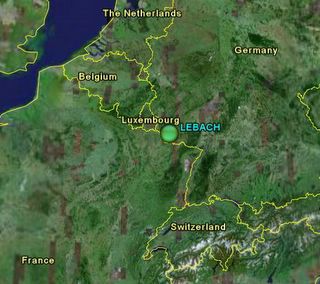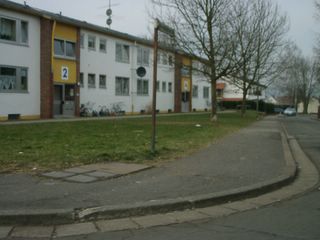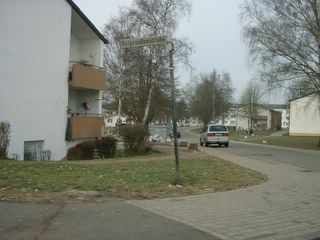Case Study: How Europe Imports Terrorists

Rabei Osman Sayed Ahmed, also known as "Mohamed the Egyptian," was the architect of the 3/11 Madrid bombings. He was captured about a year ago, and goes on trial this month in Italy. In a thorough investigative report, the Washington Post retraced Ahmed's steps, which included stops in Germany:
The asylum camp in Lebach, Germany, has enough cinder-block apartments to house about 1,500 immigrants. They are mainly North Africans, Turks and Palestinians. Most stay a few months as they wait for German authorities to decide whether they can remain in the country for the long term.In Al Qaeda in Europe, Lorenzo Vidino recounts these and other details, such as a wiretap transcript in which Ahmed brags to a young recruit how he used liquid bandage to alter his fingerprints each time they were taken. "It drove them nuts," Ahmed laughs.
On Sept. 13, 2000, a man calling himself Mohamed Abdul Hadi Fayad [Ahmed] arrived at the camp after spending a year in jail and quickly assumed a leadership role among the residents.
"He called himself 'the Imam,' " recalled Barbara Paulus, a case worker at the camp in Lebach, a town of about 22,000 near the regional capital of Saarbruecken. "We didn't have any problems with him. The others respected him. He reported their problems and talked to us on their behalf."
Fayad was an anonymous foreigner who had been arrested a year earlier on his way to Paris. Soon after the arrest, he requested asylum. . . . The German government usually grants asylum as a matter of policy to Palestinians, but officials were unable to verify Fayad's story.
Immigration officials denied Fayad's asylum request. But Germany could not deport him because officials didn't know where to send him. That situation is common in Germany, where about one in 20 asylum seekers is unable to verify their claimed nationality.
With his case in limbo, Fayad remained at the Lebach camp for almost a year. Residents are forbidden from leaving the local area, but they are not confined or closely monitored. As a practical matter, camp officials say, there is little they can do to make sure people stay.
So it didn't strike anyone as unusual when Fayad vanished. He was last seen in the camp on Aug. 29, 2001, when he came to the main office to pick up his twice-weekly food rations. Three weeks later, immigration officials notified the Lebach town hall that Fayad was no longer a resident and crossed his name off their case list.
"Each month, a lot of people disappear here," said Paulus, the case worker. "I don't know how they do it, but each month we have to close a lot of files."
It seems that Germany exercises no control over asylum seekers -- a much-abused process in any case -- whose identities remain unverified and whose applications may well be denied. So I was curious: how easy is it for terrorist "asylum seekers" to wander off at will? I first did a little research on German asylum procedures, then took a trip to Ahmed's old stomping grounds, the "camp" in Lebach.
But this is a misnomer. Not only will Germans never again build anything one could call a "camp," the term implies controlled access, which is entirely absent. The Lebach facility is best described as projects. Located in a residential area of a quiet town, it consists of perhaps twenty two-story apartment buildings with courtyards, a school, and sports fields, covering an area of about four square blocks. Nearby are two Bundeswehr (German army) installations. We spotted a police cruiser doing a quick patrol as we arrived, and noticed that local Germans, out for their traditional Sunday afternoon walk, did not stray into the neighborhood.

Discarded TVs, but no fences.

Plenty of scuz, but no guards.

Laundry and satellite dishes, but no immigration officers.

Shopping carts and junk, but no access controls.

Overflowing dumpsters and a shiny new Mercedes, but no gates.

More scuz, still no fences.

Three "yoots" barbecueing on a balcony. They eyed us hard as we drove by, and erupted in angry shouts as soon as they saw the flash from my camera.


Last shots of yet more scuz as we got the hell outta dodge. Several other men out walking around had also spotted the camera, so we were actually a little concerned that we might be chased.
The German government (actually, the 16 state governments) maintain 31 more such ghettoes throughout the country. One might be tempted to criticize officials for housing people in such crapulence, or the people who live there for creating it. However, the critical issue is egress. Residents are not yet legal immigrants, but random people who showed up at a German airport and asked for asylum. From there, while their applications are processed (and their rent and food provided by taxpayers) they can melt away into the population at any time. And thanks to Europe's open borders, they can disappear not just in Germany, but to anywhere in the EU. Like Madrid.
Thus, Europe is only as secure as its weakest link. This is not to say that a uniform EU policy would solve the problem, as the Eurocrats would be likely to impose something resembling Germany's system on all of Europe.
The upshot is, citizens of First World countries must follow immigration rules and face consequences for breaking them, while Middle Eastern terrorists are exempt, provided they recite a politically correct sob story. This is compassion taken to its illogical extreme, and sadly, the generosity extended to criminals and terrorists is exactly what generates public antipathy towards all asylum-seekers, including those who are genuinely persecuted and want only to live peacefully. Lebach is the symbol of an asylum system that wrongs decent people while rewarding the bad guys, and of a Europe eager to cooperate in its own destruction.

0 Comments:
Post a Comment
<< Home